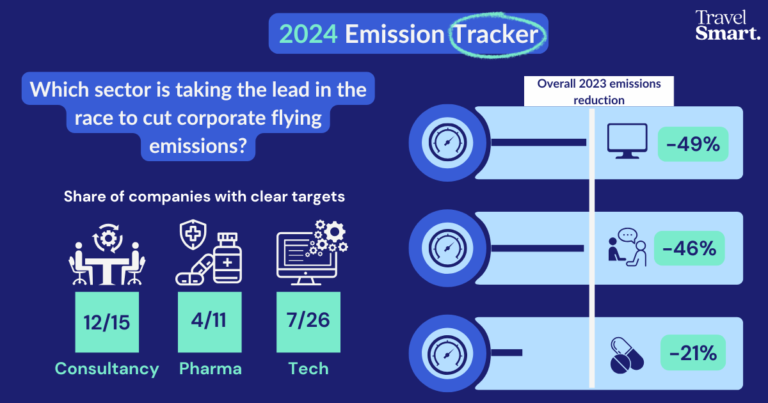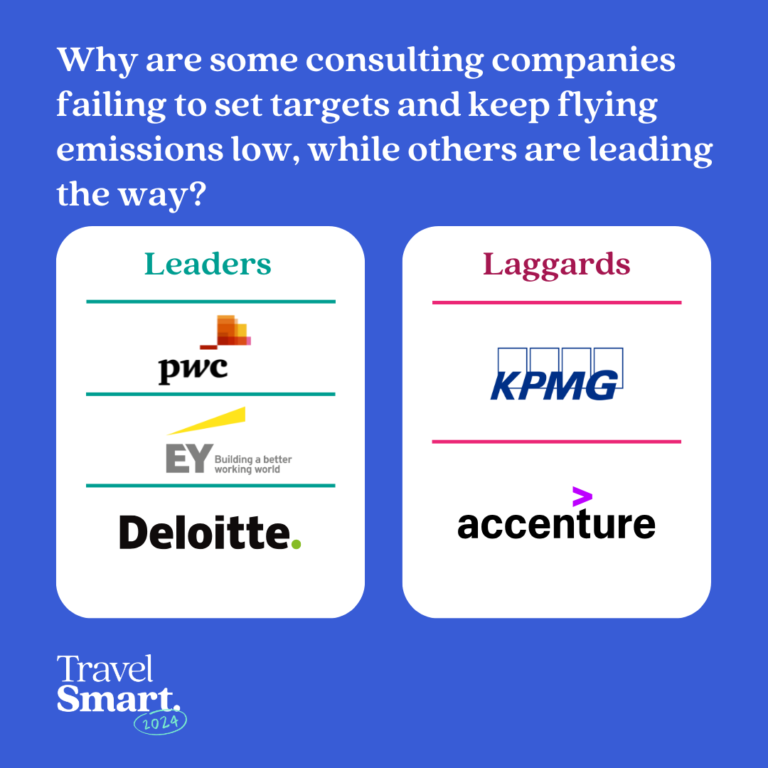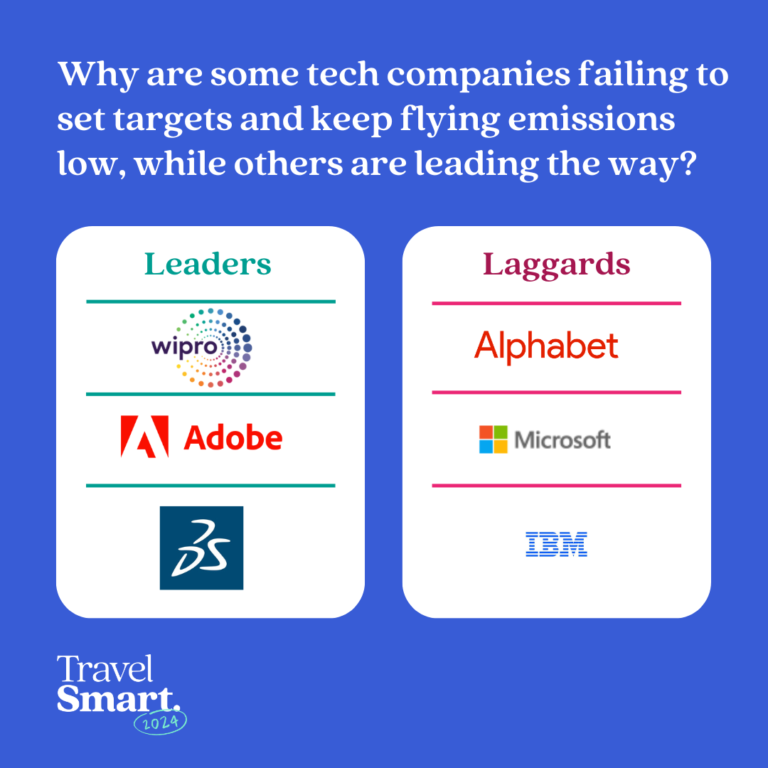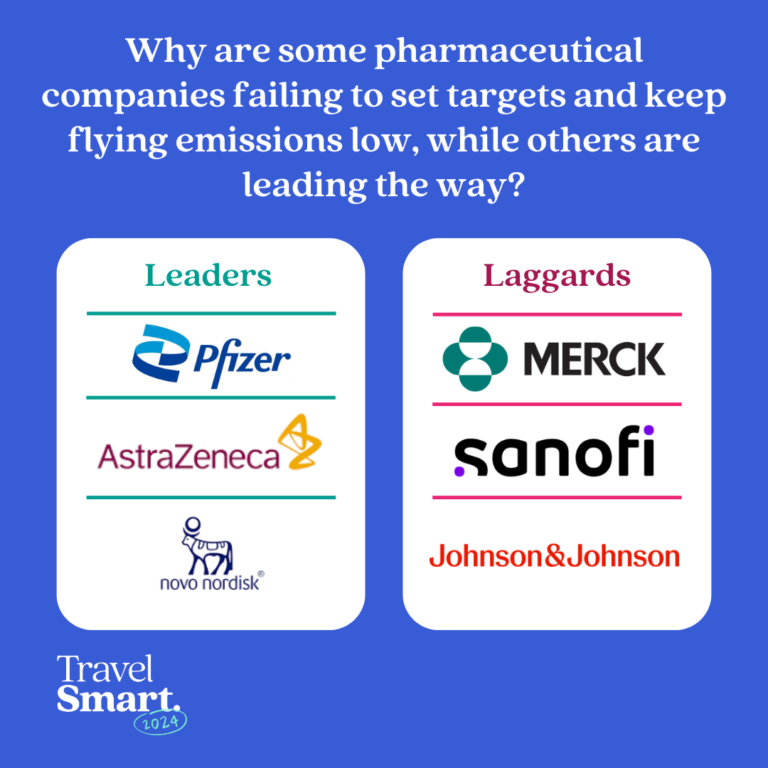Which sector is taking the lead in the race to cut corporate flying emissions?
If you are working in a company, then you must have already travelled for work. You most likely took the plane for a meeting within the country, to a neighbouring one or to the other side of the globe.
Yes, taking the plane sounds very convenient. But it’s definitely not the most sustainable way to travel for business.
We have been tracking the 2023 emissions of worldwide companies from the consulting, technology and pharmaceutical sectors. And we determined a clear leader in reducing corporate flying emissions. To end the suspense: it’s the consulting sector.
Companies like Deloitte, Capgemini and Arcadis are part of the pacesetting sector which demonstrates the importance of setting clear targets to reduce emissions.




A leader and two laggards
You may have already worked in a consultancy and had a lot of online meetings. Then, you wouldn’t be surprised to learn that this sector is one of the best at cutting down on corporate flying. There can be many interpretations to this, but what we know from the data is that this sector does one thing more than the others: set clear targets.
This means, setting targets to reduce business travel in general or air travel specifically by a certain year. These hold companies accountable for lowering emissions and help prevent a rebound to 2019 levels. For example, EY has set a target of -35% emissions by 2025 and reduced its emissions by -76% and -59%, in 2022 and 2023 respectively.
However we also need to address the elephants in the room. KPMG and Accenture, the two top flyers of the group, haven’t set any specific targets and risk pulling down the whole sector in the future.
This downgrade is even more at risk in the technology sector. Today, its overall emissions reduction is closer to the -50% goal of the Travel Smart campaign. The sector brings together the most top flyers out of all three. Those eight big polluters, such as Google, Apple, IBM or Microsoft, will very likely bring the whole sector down if they don’t set targets in the immediate term.
Now, you may have worked in a pharmaceutical company instead and attended many in-person meetings. Then, your company is part of a sector that is lagging behind the other two. This sector has two top flyers that significantly impede the whole group in largely reducing business travel emissions. This is mainly due to these companies not having set specific targets to this effect.
The sector has reduced its 2023 emissions by only -21%, compared with 2019 levels. The reduction could have been twice as much at -44%, if Johnson & Johnson and Merck had reduced their emissions by half. Instead, Johnson & Johnson only reduced them by 10% and Merck increased them by 29%.
Flying less is the way to Travel Smart
You may be asking, how can companies reduce their business air travel emissions? What if business travellers fly on planes that use sustainable aviation fuels (SAFs)?
Although there are hopes for their contribution in the future, for now we can’t really rely on them to cut flying emissions – due to their limited scalability and not all being equally sustainable.
The only solution to reduce these emissions in the short term is to fly less. In order to do that, companies need to set a clear target. And develop and implement all necessary measures to actually achieve it.
Once these targets are set, there are several alternatives to attending meetings without flying. You can opt for using rail where possible. In fact, some companies have developed a rail policy such as PwC or Wipro. You can combine several of your meetings in order to avoid one-day trips or you can also use virtual collaboration tools.
One last option for global companies – which have branches all over the world – is to send a representative of the branch of where the meeting is held. For example, as the European Vice President of Meta you would attend a meeting in Paris instead of flying out Mark Zuckerberg.
In the end
All in all, we have seen that the consulting sector is leading in cutting business travel emissions, all due to companies which have set clear targets.
While the pharmaceutical and technology sectors are lagging behind, all due to top flyers with no credible targets holding back the whole group.
In the end, we are left with one pending question: Why are those top flyers failing to set targets and keep flying emissions low, while others are leading the way?
Aiza Rodrigues Akhtar, Travel Smart Campaign Assistant
